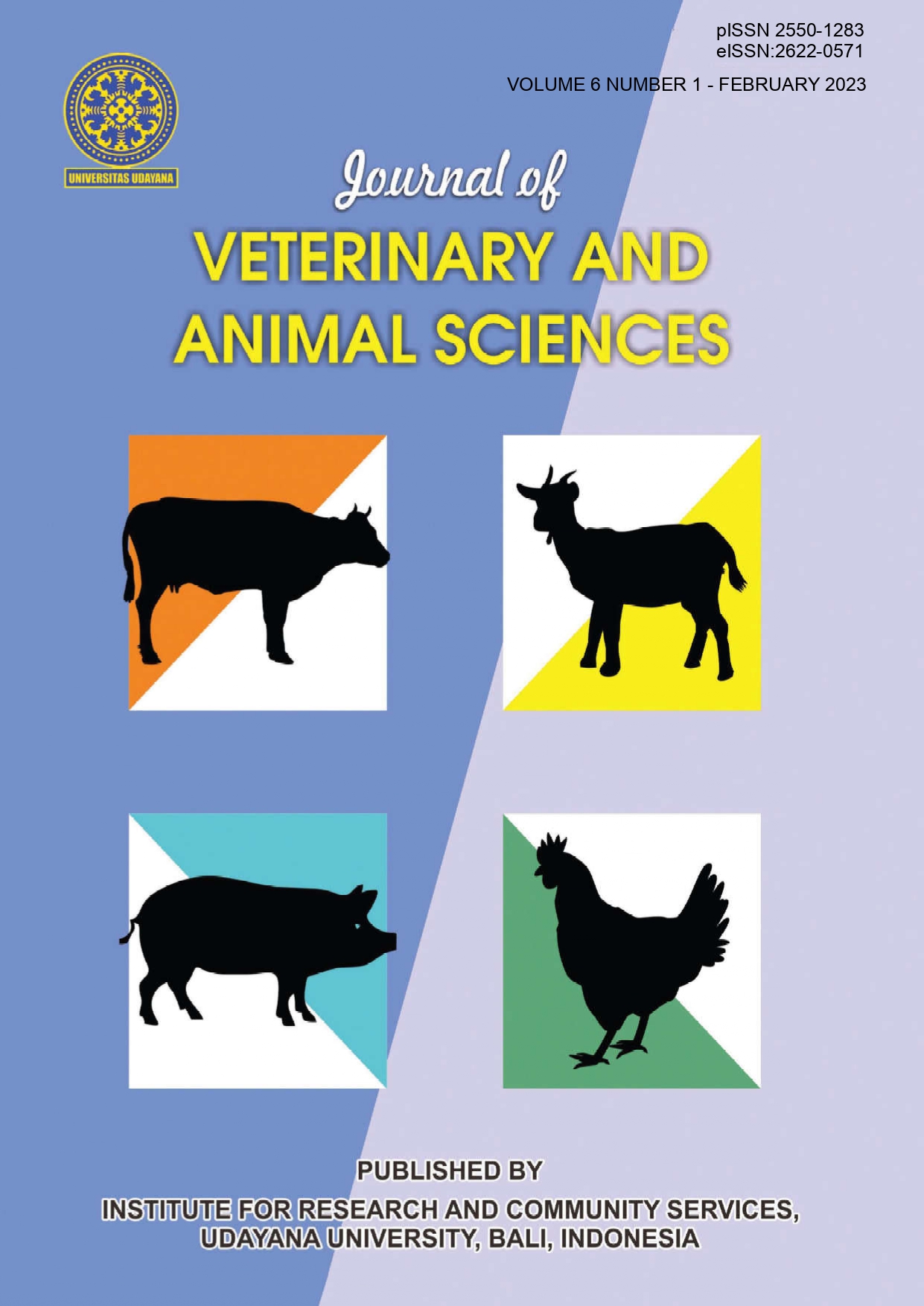A Review of Clinico-epidemiology Bovine Anaplasmosis
Abstract
Abstract. This paper aims to review the clinico-epidemiology of bovine anaplasmosis. Bovine anaplasmosis is a vector-borne disease affecting ruminants that can result in significant economic losses within the livestock industry, due to high morbidity and mortality rates in susceptible cattle. The modes of transmission of bovine anaplasmosis comprise mechanical (blood-contaminated fomites such as needles, ear tagging, horn cutting and castration equipment), biological (tick bites) and transplacental (from mother to foetus). Bovine anaplasmosis is prevalent in tropical and subtropical regions across the globe. All ages are at risk of A. marginale infection, with disease severity escalating with age. Common clinical signs of bovine anaplasmosis comprise fever, anorexia, rapid deterioration of body condition, a pronounced decline in milk production, pale mucosa and jaundice, an increased heart and respiratory rate, muscle weakness and depression. Diagnosis of bovine anaplasmosis using the blood smear method is limited to animals infected with A. marginale during the acute phase, and cannot detect infection in subclinical or carrier animals, necessitating serological examination of antibodies and confirmation of antigens by molecular detection methods. While oxytetracycline treatment is effective for acute cases, carrier animals do not respond to it. Control measures for bovine anaplasmosis differ depending on location and include various methods such as maintaining Anaplasma-free herds, controlling vectors, administering antibiotics and vaccination.











